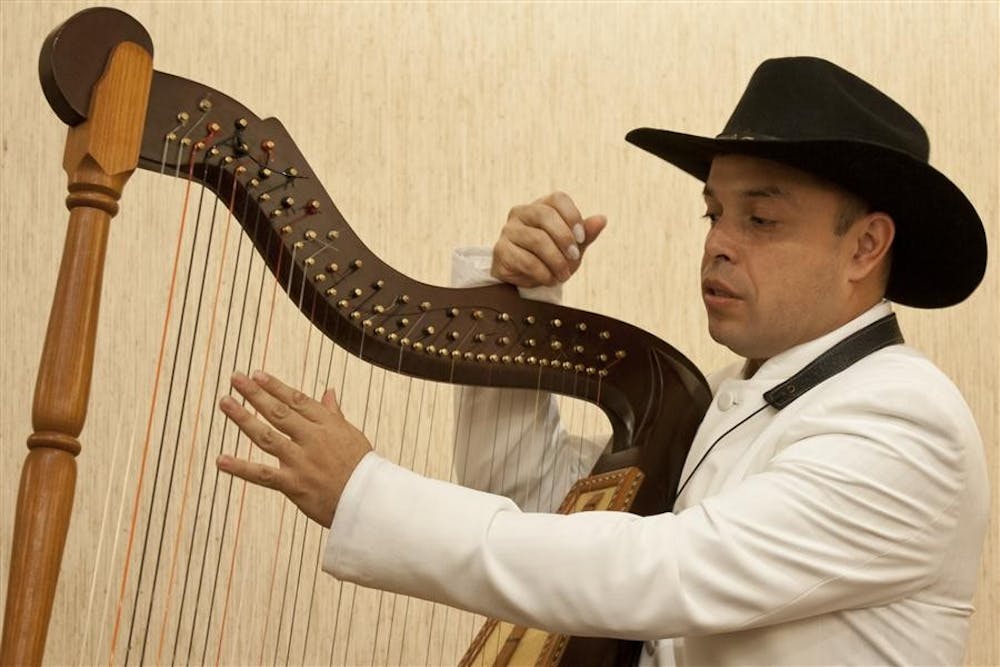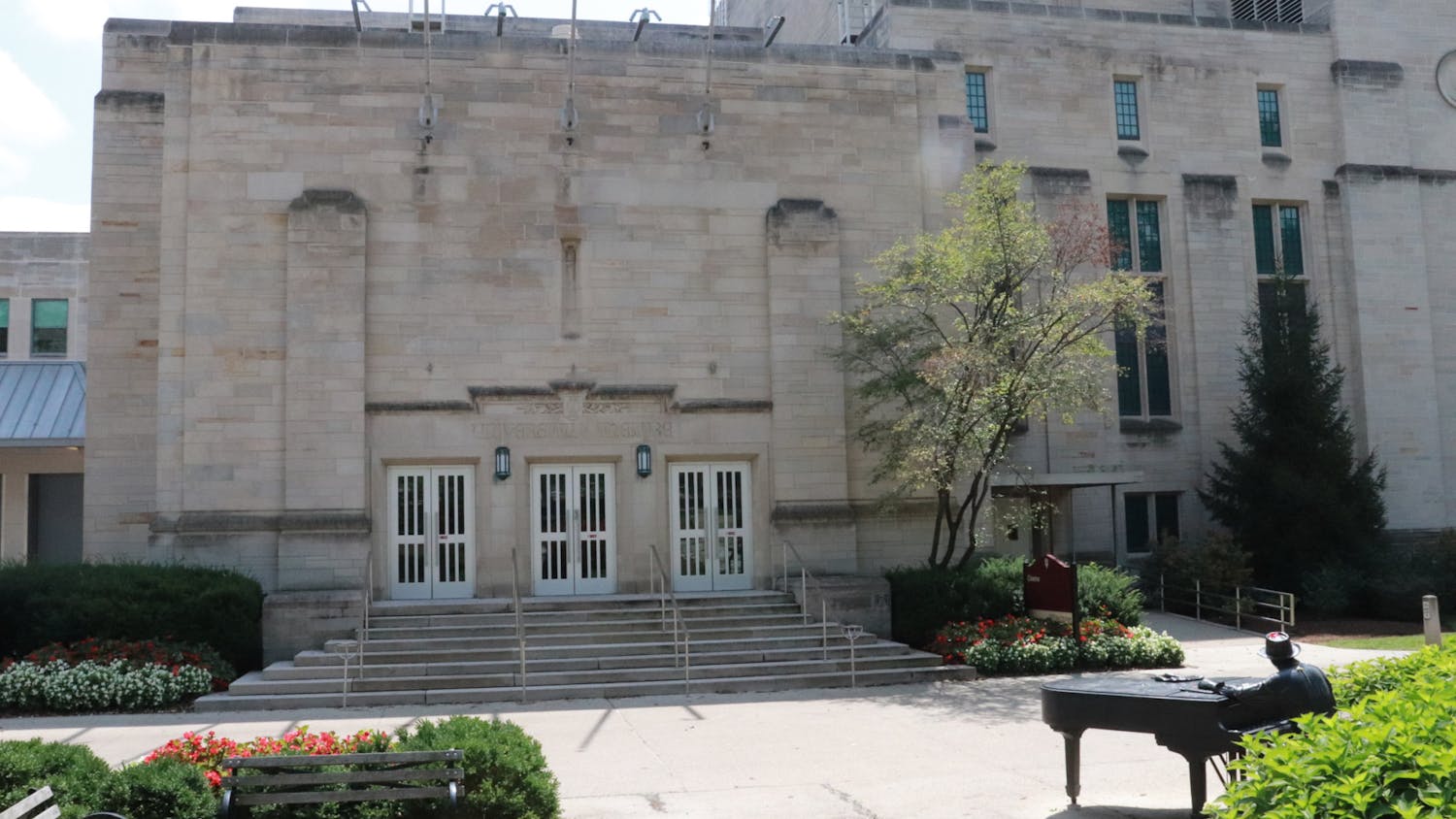Los Llaneros, a Colombian and Venezuelan music group, played to an enthusiastic crowd in the Mathers Museum of World Cultures last night. Songs were sung in Spanish and played with traditional Llano, or plains, instruments.
“Tonight is another part of the Lotus Blossom Festival,” said Sarah Hatcher, curator of education at Mathers.
Beginning with the topic of traditional music from the Llanos, each member of the group explained what instrument they played and how it came to be a part of
Llanero music.
Edgar East, a Panamanian, played the maracas and explained what their significance is to people in Colombia and Venezuela.
“These maracas, called gapachos, are filled with seeds from the gapacho plant,” East said. “The plants grow year round in Colombia, which make the gapacho maraca native to that specific area. You could not pick up a maraca from Cuba and play
Llanero music.”
Vocalist Karin Stein played the cuatro, a small string instrument, and afterward explained the importance of music to cowboys in the Llanos.
“I grew up in Colombia,” Stein said. “Where I’m from, men go out and herd cattle all day and, a lot of times, night as well in the plains. They usually take maracas and a cuatro with them to make the time pass a little more pleasantly.”
Daniel Rojas, also from Colombia, played a harp that boasted 36 strings rather than the traditional 32.
“The harps we play for Llanero music are from 17th century Spain,” Rojas said. “They were brought over by Jesuit priests, missionaries, who influenced our music. Besides having a nontraditional number of strings, we also have a different method of playing. We use our nails.”
Laughing, East complemented Rojas’ speech with a brief story of cowboys on
the Llanos.
“One day, I asked the cowboys going out if they wanted to take a harp along with them,” East said. “They just looked at me and said, ‘nay.’”
Though specializing in Llanero music, the group also played music with an Andean influence, as well as African-influenced music.
“The sequence that we chose tonight took us, in a roundabout way, all around Latin America,” East said. “There are three major influences in Latin America, and we have touched on all three. First, we played native Indian music. Secondly, we played music from the Andes mountains. Lastly, we played music from the African ethnic group, the third and final influence in Latin America.”
When the group changed from Indian music to Andean to African, they changed hats, as well. From cowboy hats to fedoras, the group came ready to represent their homelands.
“This music is home to me,” Stein said. “Though I may be somewhere else in body, the music always takes me back to where I’m from.”
Los Llaneros celebrates Spanish music

Get stories like this in your inbox
Subscribe





